Providence's zoning could get a major overhaul. Here's what might change.
PROVIDENCE − A return to rowhouses, a cap on the number of units in new apartment buildings and expanded historical districts are just a few of the things in the city's new comprehensive plan, which received its first stamp of approval last week.
What's going on: The City Plan Commission sent the city's new comprehensive plan to the City Council for approval, with a few tweaks beyond what city planners had originally proposed.
Why it matters: The city's comprehensive plan guides development for the next 10 years. Perhaps more important than the plan, however, are the later changes to zoning that carry out the plan's ideas, such as caps on density of apartment buildings, legalizing row houses and bans on short-term rentals.
The plan also calls for upzoning (allowing increased density) all duplex zones to triplexes, as well as three broad areas of triplexes to the much denser "R-4" zone (think apartment buildings), which is to get a cap on density. More on that below.
What happens next? The City Council will take up the comprehensive plan and needs to pass it twice, because it is considered an ordinance.
Once the plan passes, work will begin on implementing it. That includes figuring out how two of the three commercial zones will be combined and other zoning changes that dictate how new developments can or can't be built in the city.
What is being said about it? Two factions are warring over the plan.
On one side is the Providence Preservation Society, which continues to call for an expansion of historical districts and committees to force changes to designs put forward by developers, as well as a group of neighborhood organizations lead by the Fox Point Neighborhood Association and the Jewelry District Association. A bevy of properties listed on the National Register of Historic Places are being added to the historical district.
Fox Point's neighborhood association describes itself as "protecting and enhancing the quality of life in the neighborhood and its historic integrity and resources," and it generally opposes new and denser development.
On the other side are pro-housing groups, including the Providence Urbanist Network, which argued for allowing more density throughout the city.
"We're thrilled by the upzoning," Providence Urbanist Network member Christian Roselund said.
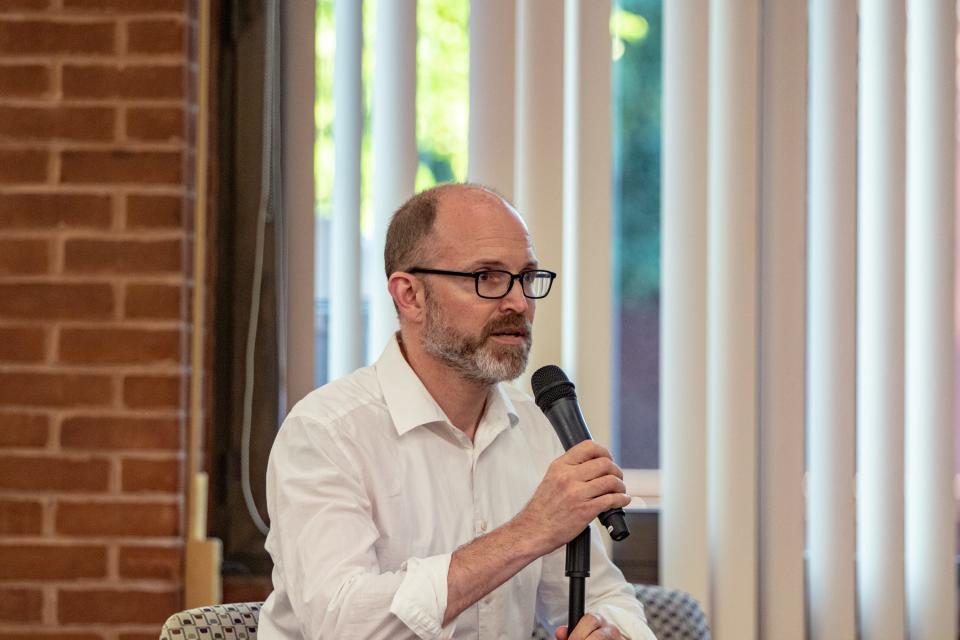
Us vs. Them: Most of the people who testified fell into one of the two camps, but were not affiliated with either group, as sharp "us-versus-them" rhetoric took hold during the meeting.
Linda Perri of Washington Park said "in-fill" development, under which houses are built on empty lots, means her neighborhood is "going to the dogs" and that private property owners don't care about green space.
When developers come into a neighborhood, they tear down houses, jam students into homes and "want to build giant apartment buildings," College Hill Neighborhood Association president Nina Markov said.
Mel Rainsberger, a renter, pointed out to the previous speakers that she is also their neighbor.
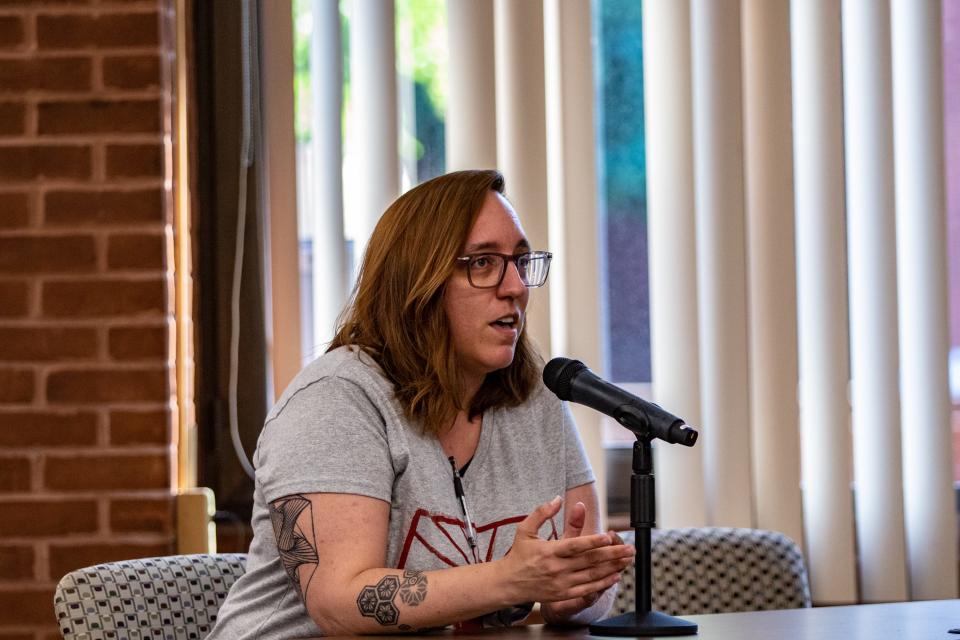
"Saying you don't want to change is making sure people like me can't stay," Rainsberger said. "What will it look like when everybody leaves except the homeowners?" The city will become a "decaying tooth" without more growth, she said.
The city continues to falter in enforcement: One pain point that multiple people called out, and that was not addressed by the Plan Commission, is the city's failure to address quality-of-life issues that are reported, including cars parked on sidewalks, especially around businesses, and non-enforcement of the requirement that property owners clear snow from sidewalks in front of their properties.
Jewelry District Association president Sharon Steele said enforcement issues would only get worse if the city increases in density and size.
Advocates wonder whether there will be change: Nonprofit housing developer Carla DeStefano said the language in the plan is the same as it's been for decades, but the city has not taken meaningful action to create more income-restricted housing. Why would anything be different this time? she asked.
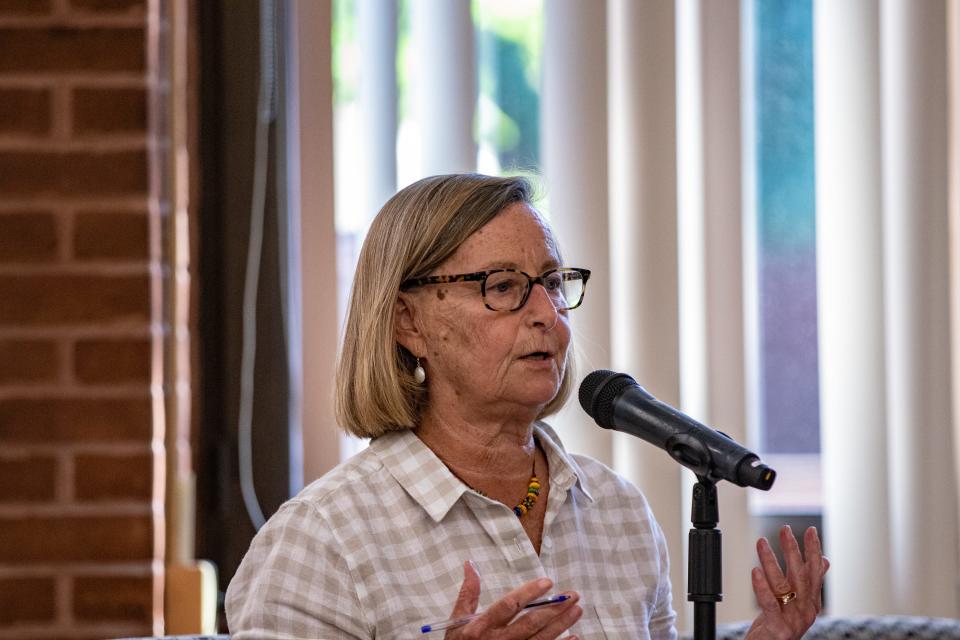
Will more row houses come to Providence?
Land use lawyer Dylan Conley, who frequently represents clients in front of the commission, argued that non-condominium row houses (also known as townhouses, terraces, terraced houses, or row homes) should be legalized, which would allow lot lines that go between buildings.
Allowing properties to be split makes the price of a row house more palatable, because there is no condo association fee, Conley said.
The request for row houses came after the General Assembly did not pass a reform of the state's building code requiring sprinkler systems in triple-decker buildings, which was seen as making them too expensive to build. Row houses have fireproof material separating the units, as opposed to a triple-decker, where the separation is wood floors. Efforts to allow for single-stairway apartment buildings also failed.
For more on how triple-deckers came to dominate Providence, and how they have become unbuildable, read reporter Tom Mooney's dive into the iconic dwellings.
Conley's request was added to the plan that will be presented to the City Council.
Roselund praised the last-minute addition as a step toward more "gentle density" in the city. His group wanted to see duplexes or three-deckers legalized across the entire city. However, the General Assembly legalized accessory dwelling units this year (also known as granny flats, in-law apartments, secondary suites, granny annexes and garden suites) after it failed in the Senate last year. That change will allow people to add one additional unit in single-family zoned areas.
Where could more housing be built in Providence?
As part of the comprehensive plan, the city is proposing to make some big zoning changes, although the specifics still have to be hammered out. These include:
Turning all duplex zones into triplex zones and renaming them "medium-density residential." (The duplex zones are the result of an effort to reduce density in the 1950s.)
Allowing "small" apartment buildings in the new triplex zone through an as-yet-undetermined process.
Turning some triplex zones into denser R-4 zones, which allow for larger apartment buildings.
Turning the least-dense commercial zoning (C-1) into the next-higher density level, C-2.
New buildings in residential areas would be no taller than three stories except in R-4, where they could be four stories.
Putting a cap on the apartment building zone
Following repeated complaints about proposed high-density apartment buildings with small units by developers Dustin Dezube and Kevin Diamond, one of the proposed changes is to link the maximum number of units in an apartment building to the total square footage, forcing an increase in unit size and decrease in density.
Tiny units are not new in Providence and exist downtown in the hip "micro-lofts" at the Arcade.
Where would the zone changes happen?
In a newly released zoning map, there are three areas proposed to be rezoned from the triplex R-3 to the R-4 zone, which would allow apartment buildings:
Broadly between Route 6 and Westminster Street, across I-95 from downtown.
Cranston Street at Dexter Street, bordered by Warren Street to Elmwood Avenue.
Across Elmwood Avenue from Dudley Street to Prairie Avenue, bounded by I-95.
Douglas Avenue to Raymond Street, bounded by Radcliffe Avenue and West Park Street.
An additional small strip along Gano Street from Preston Street to Waterman Street.
Triple-deckers in single-family zones
In the first iterations of the plan, the city's expansive swaths of single-family zoning were left untouched.
At Councilor Miguel Sanchez's request, the commission sent forward a recommendation to rezone some of his district in the Manton neighborhood, south of the Triggs Memorial Golf Course, to the R-3 triple-decker zone. Sanchez said many of these lots are vacant and the owners want to build multifamily houses.
Any new house is prohibitively expensive to build, but multifamily houses bring down the cost per unit.

Wayland Square, Blackstone Boulevard targeted for density: In addition to the area requested for a rezone by Sanchez, commission chairman Michael Gazdacko pushed for changing single-family zoning to triple-decker zoning around Wayland Square and Blackstone Boulevard, as outlined by Zoe Muller of the company Utile. Her former coworker Charlotte Lipschitz is also one of the commissioners but did not attend the final meeting.
Page 2 of PVD Comp Plan Comments
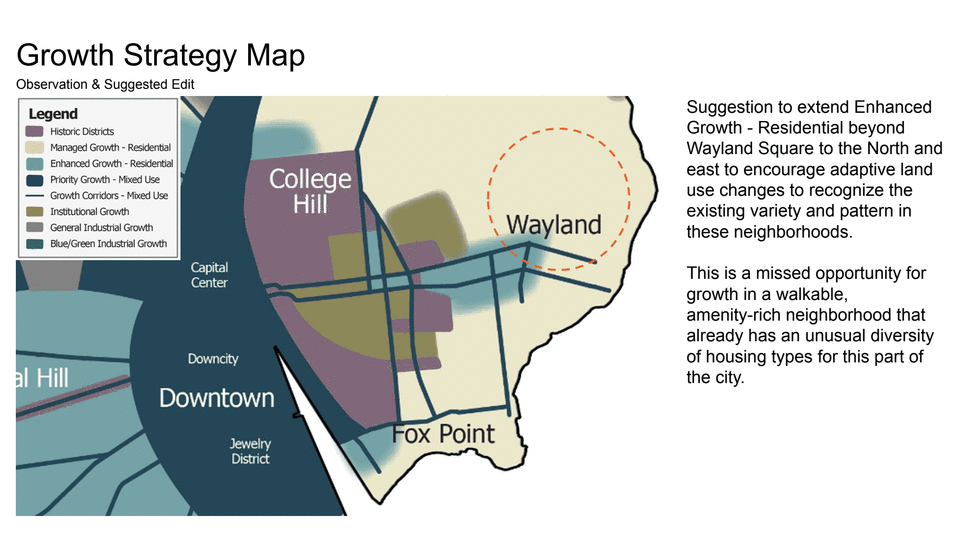
Contributed to DocumentCloud by Wheeler Cowperthwaite (The Providence Journal) • View document or read text
Page 1 of Draft-Comprehensive-Plan-Update-June-Hearing-05.31.24
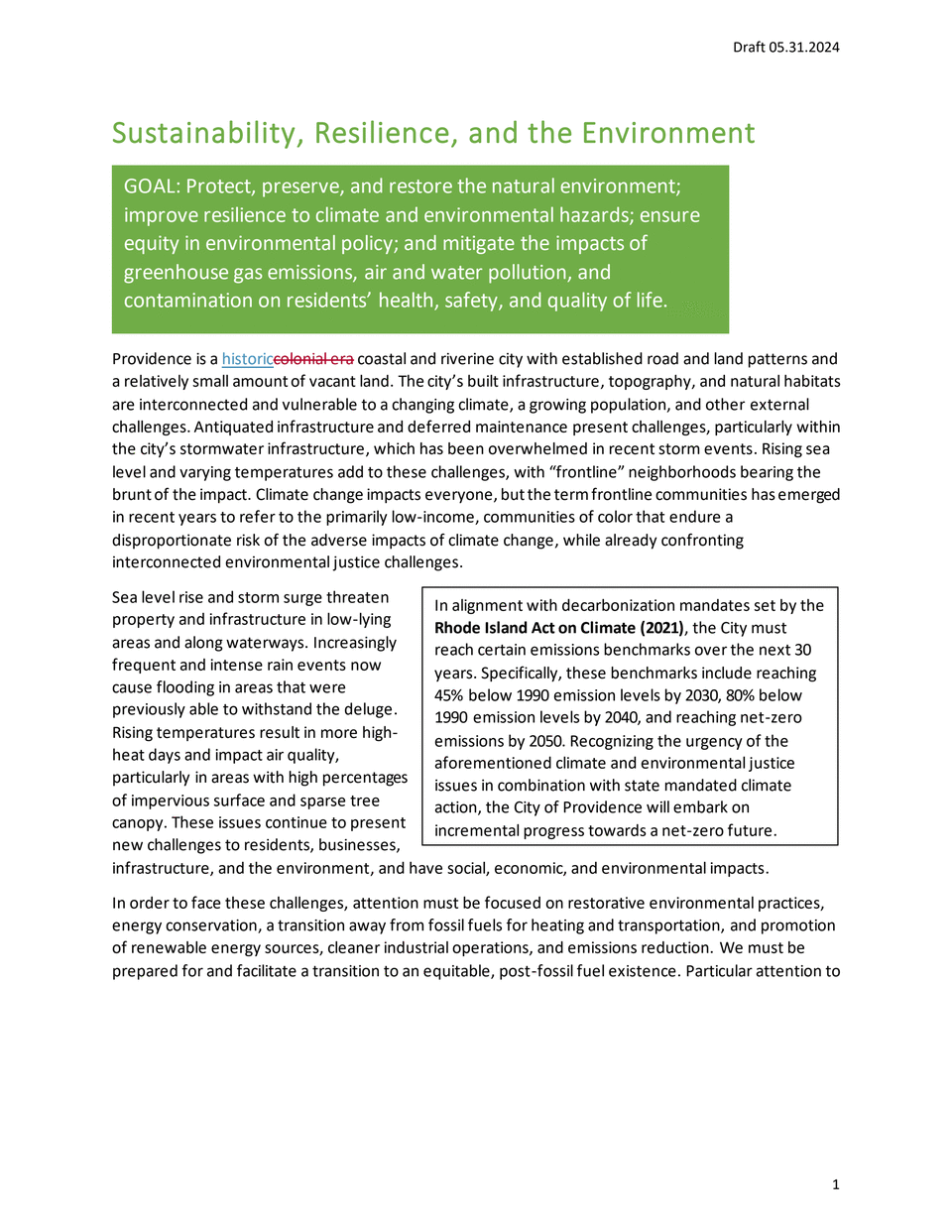
Contributed to DocumentCloud by Wheeler Cowperthwaite (The Providence Journal) • View document or read text
Two years boiled down to 18 days
While the head of the city's Planning Department, Joe Mulligan, lauded the two-year process and amount of public feedback gathered in developing the plan, the neighborhood associations complained about a lack of input on the finished product sent to the City Council.
The final draft, prepared in advance of the June 18 vote, was published on May 31, according to its time stamp, allowing 18 days for public comments on the full and final product.
The Fox Point Neighborhood Association sent out its petition protesting the lack of input and density increases to Providence's other neighborhood organizations 24 hours before the meeting.
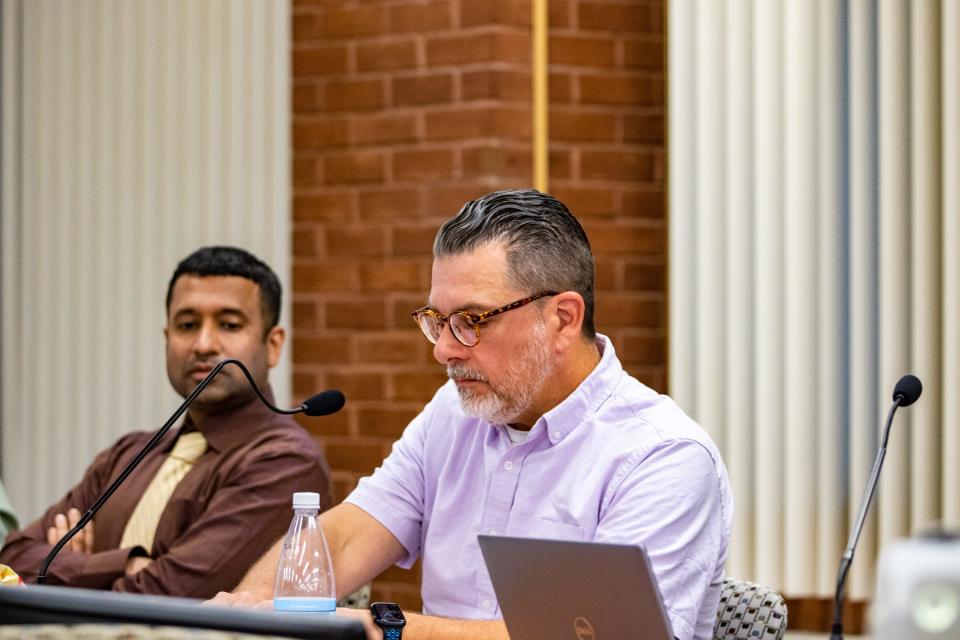
Gazdacko's suggestion to turn some single-family zoned areas into a triplex zone was discussed only at the end of the meeting, after public comment. He did not allow anyone from the public to speak to his additions, which were quickly voted on and added to the plan.
Thanks to our subscribers, who help make this coverage possible. If you are not a subscriber, please consider supporting quality local journalism with a Providence Journal subscription. Here's our latest offer.
Reach reporter Wheeler Cowperthwaite at wcowperthwaite@providencejournal.com or follow him on Twitter @WheelerReporter
This article originally appeared on The Providence Journal: How housing and zoning could change in Providence over 10 years

